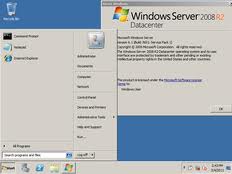NOC Services By ProVal Technologies
Best Practices for Managing Windows Server 2008 R2
Best Practices for Managing Windows Server 2008 R2
Managing server seems to be one of the toughest job in the
world. After searching lot I am unable to find any source that can provide
comprehensive information on all server issues. Eventually finding several of
informative sources I got enough information on server management.
Here I am going to discuss about Windows Server 2008 R2 Best Practices Analyzers.
This is the great enhance quick look at Window Server 2008
R2. This is not new we have the Best Practices Analyzers for years around us.
We can free download from internet. The
tools always been designed to help you find errors give you general
recommendation to solve the problem.
If you never heard about the server you have several
question like: What I do to make it up, How do i configure, How do I work with
this. Best Practices Analyzers help you to how you can improve your work.
In Windows management, best practices are guidelines that
are considered the ideal way, under typical circumstances, to configure a
server as defined by experts. For example, it is considered a best practice for
most server technologies to keep open only those ports required for the
technologies to communicate with other networked computers, and block unused
ports. Although best practice violations, even crucial ones, are not
necessarily problematic, they indicate server configurations that can result in
poor performance, poor reliability, unexpected conflicts, increased security
risks, or other potential problems.
There are some information provided by Microsoft:
Best Practices Analyzer (BPA) is a server management tool
that is available in Windows Server® 2008 R2. BPA can help administrators
reduce best practice violations by scanning one or more roles that are
installed on Windows Server 2008 R2, and reporting best practice violations to
the administrator. Administrators can filter or exclude results from BPA
reports that they do not have to see. Administrators can also perform BPA tasks
by using either the Server Manager GUI, or Windows PowerShell cmdlets.
BPA can also be used on remote servers that are running
Windows Server 2008 R2, by using Server Manager targeted at a remote server.
For more information about how to run Server Manager targeted at a remote
server, see Remote Management with Server Manager.
